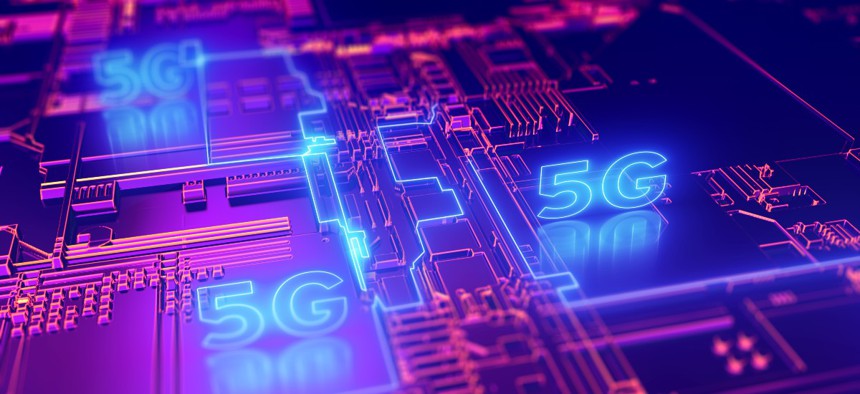GDIT-Led Coalition Working to Drive 5G Adoption Across Government

Violka08/Getty Images
The coalition includes Amazon Web Services, Cisco, Dell Technologies, Splunk and T-Mobile.
A group of leading technology companies has partnered with Falls Church, Va.-based contractor General Dynamics Information Technology to form an industry coalition focused on speeding up the adoption and use of 5G and edge technologies across the federal government.
The 5G and Edge Accelerator Coalition—which launched Nov. 10—includes Amazon Web Services, Cisco, Dell Technologies, Splunk and T-Mobile. The coalition will use GDIT’s advanced wireless emerge lab to test and develop 5G and edge computing technologies for federal agencies. GDIT said in a press release that it will focus on 5G and edge solutions in a variety of government sectors, including “military, logistics and supply chain, healthcare, education and smart infrastructure.”
“5G is so new that everybody is coming out with a 5G product,” Shuaib Porjosh, director for advanced wireless at GDIT, told Nextgov. “And what we have found by testing them out is that not everything that is sold as 5G is really 5G. So the lab has really helped us sort out those other pieces.”
Robert Smallwood, GDIT's vice president of digital modernization and enterprise IT, told Nextgov that the range of companies in the coalition “allows us to better address the multiple use cases” within agencies’ environments, which the coalition is now actively working to do.
“One of our engagements was with a federal civilian agency, which has five, six or maybe even more use cases where 5G could assist them in their environments—everything from vehicle predictive maintenance, all the way to factory of the future,” Smallwood said. “So we got our team together and said, ‘What are they doing, where are their heads at as far as 5G?’ And we worked collaboratively to come up with some potential ideas that we thought would resonate with them.”
Federal agencies are already looking at ways of bolstering their tech-related capabilities by increasing their reliance on 5G services. Last month, GDIT released the results of a survey it conducted of government employees that found that 89% of respondents were “already studying or using commercial or private 5G capabilities within their agency.”
Smallwood said the survey results underscored that the focus of federal agencies right now, from a use case perspective, is “getting the bandwidth and the connectivity where it needs to be right.”
While most federal sectors are exploring the use of 5G capabilities, the Pentagon is taking a prominent lead in using 5G services to help underpin its Joint All-Domain Command and Control—or JADC2—effort to drive interoperability across all of the military services. Smallwood called this type of enhanced device-to-device connectivity “a game changer” for the defense sector.
“The idea that you can ingest data on any number of devices, sensors or equipment running at the edge, do some analysis on that information and then share that information—without having to send it all the way back into a data center or into a cloud environment—really helps provide that real-time situational awareness,” he added.






